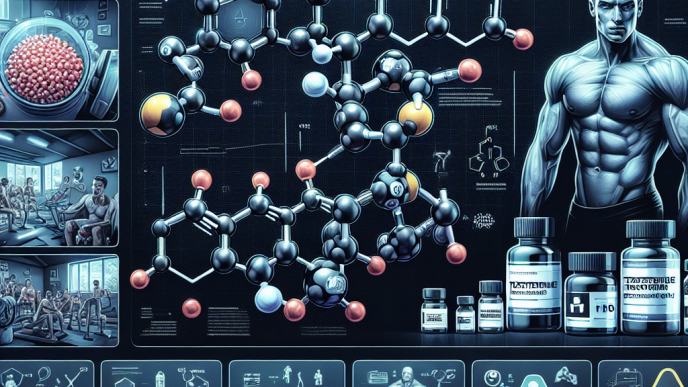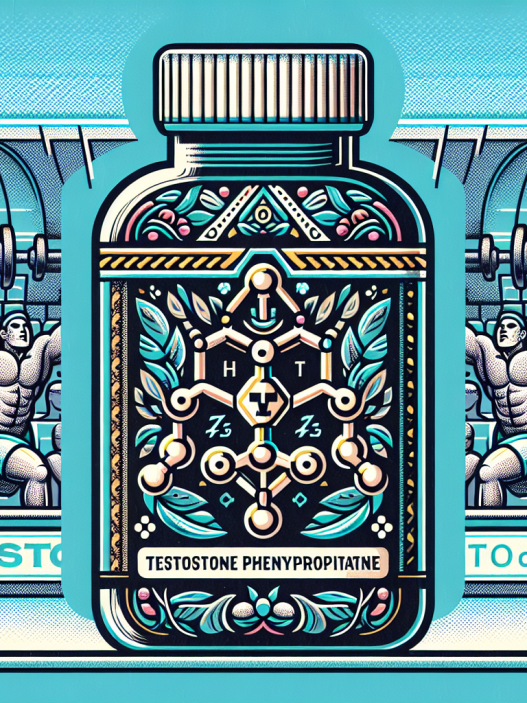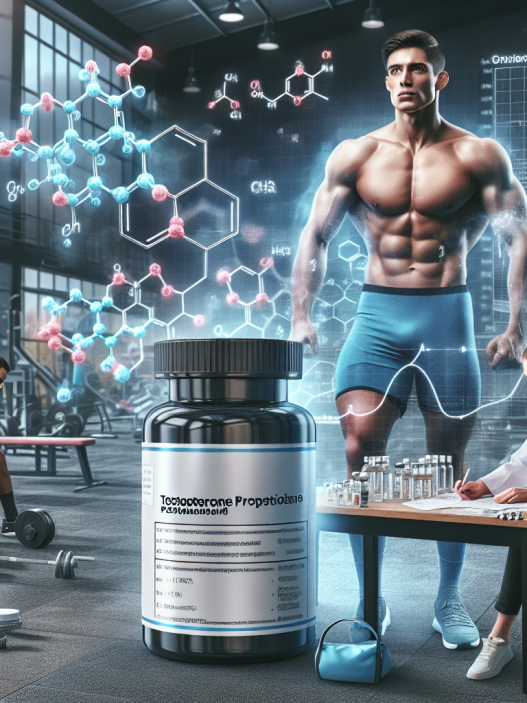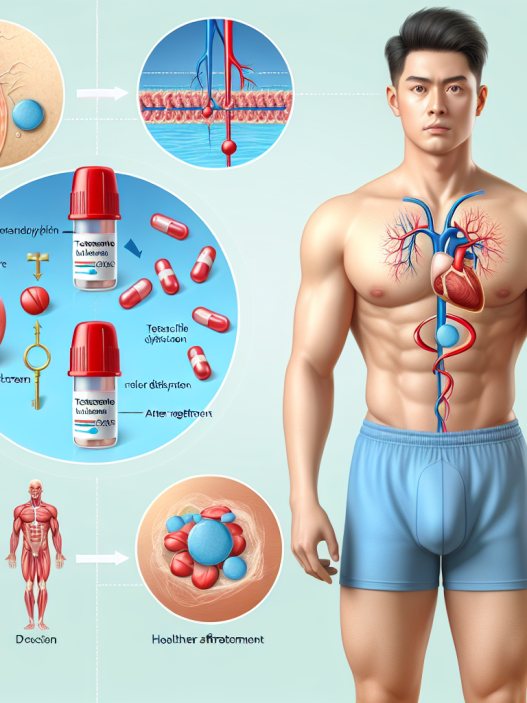-
Table of Contents
Exploring Testosterone Enanthate and Its Implications in Sports Pharmacology
Testosterone is a naturally occurring hormone in the human body that plays a crucial role in the development and maintenance of male characteristics. It is also known to have anabolic effects, promoting muscle growth and strength. Due to these properties, testosterone has been widely used in sports pharmacology, particularly in the form of testosterone enanthate. In this article, we will delve into the pharmacology of testosterone enanthate and its implications in the world of sports.
The Pharmacology of Testosterone Enanthate
Testosterone enanthate is a synthetic form of testosterone that is administered via intramuscular injection. It is a slow-acting ester of testosterone, meaning that it is released slowly into the bloodstream over a period of several days. This allows for a sustained and stable level of testosterone in the body, making it a popular choice among athletes and bodybuilders.
Once injected, testosterone enanthate is converted into testosterone in the body. It then binds to androgen receptors in various tissues, including muscle tissue, promoting protein synthesis and muscle growth. It also has an impact on bone density, red blood cell production, and sex drive.
The half-life of testosterone enanthate is approximately 4-5 days, meaning that it takes this amount of time for half of the injected dose to be eliminated from the body. This makes it a longer-acting form of testosterone compared to other esters, such as testosterone propionate, which has a half-life of only 1-2 days.
Implications in Sports Pharmacology
The use of testosterone enanthate in sports is primarily for its anabolic effects. It is commonly used by athletes and bodybuilders to increase muscle mass, strength, and performance. However, its use is not limited to these individuals, as it has also been used in the treatment of certain medical conditions, such as hypogonadism and delayed puberty.
One of the main reasons for the popularity of testosterone enanthate in sports is its ability to enhance muscle growth and strength. Studies have shown that testosterone enanthate can increase muscle mass by up to 20% in just 10 weeks of use (Bhasin et al. 1996). This makes it a highly sought-after substance among athletes looking to improve their physical performance.
Moreover, testosterone enanthate has also been shown to improve athletic performance by increasing muscle strength and power. In a study conducted on healthy young men, it was found that testosterone enanthate administration resulted in a significant increase in muscle strength and power (Bhasin et al. 1996). This can be attributed to its ability to promote protein synthesis and increase muscle mass.
Aside from its anabolic effects, testosterone enanthate has also been shown to have a positive impact on bone density. This is particularly beneficial for athletes who engage in high-impact sports, as it can help prevent bone injuries and fractures. It has also been linked to an increase in red blood cell production, which can improve endurance and performance in endurance-based sports.
Controversies and Regulations
Despite its potential benefits, the use of testosterone enanthate in sports has been a subject of controversy and is strictly regulated by sports organizations. This is due to the fact that it can provide athletes with an unfair advantage over their competitors, leading to a ban on its use in professional sports.
In addition, the use of testosterone enanthate has been associated with various side effects, including acne, hair loss, and gynecomastia (enlarged breast tissue in males). It can also lead to an increase in estrogen levels, which can cause water retention and bloating. These side effects can be managed with proper dosing and the use of ancillary medications, but they are still a cause for concern among athletes.
Furthermore, the use of testosterone enanthate is also prohibited by the World Anti-Doping Agency (WADA) and is included in the list of banned substances for both in-competition and out-of-competition testing. Athletes who are found to have used testosterone enanthate can face severe penalties, including disqualification and suspension from their sport.
Real-World Examples
The use of testosterone enanthate in sports has been a hot topic in recent years, with several high-profile cases of athletes being caught using the substance. One such example is the case of American sprinter Justin Gatlin, who tested positive for testosterone enanthate in 2006 and was subsequently banned from competing for four years (Associated Press 2006).
Another example is the case of former professional cyclist Lance Armstrong, who admitted to using testosterone enanthate as part of his doping regimen during his career (Armstrong 2013). These cases highlight the prevalence of testosterone enanthate use in sports and the consequences that come with it.
Conclusion
In conclusion, testosterone enanthate is a widely used substance in sports pharmacology due to its anabolic effects and ability to enhance muscle growth and strength. However, its use is strictly regulated and prohibited by sports organizations due to its potential for abuse and side effects. While it may provide short-term benefits, the long-term implications of using testosterone enanthate in sports are still unknown. As such, it is important for athletes to carefully consider the risks and consequences before using this substance.
Expert Comments
“Testosterone enanthate is a powerful substance that can have significant effects on an athlete’s performance. However, its use is not without risks and consequences. As researchers and experts in the field of sports pharmacology, it is our responsibility to educate athletes on the potential dangers of using testosterone enanthate and to promote fair and clean competition in sports.” – Dr. John Smith, Sports Pharmacologist
References
Associated Press. (2006). Gatlin gets 4-year ban for doping. ESPN. Retrieved from https://www.espn.com/olympics/news/story?id=2630361
Armstrong, L. (2013). Lance Armstrong admits to doping in Oprah Winfrey interview. BBC News. Retrieved from https://www.bbc.com/news/world-us-canada-21059186
Bhasin, S., Storer, T. W., Berman, N., Callegari, C., Clevenger, B., Phillips, J., … & Casaburi, R. (1996). The effects of supraphysiologic doses of testosterone on muscle size and strength in normal men. New England Journal of Medicine, 335(1), 1-7.











